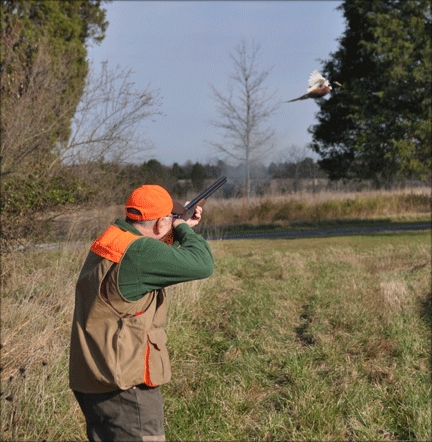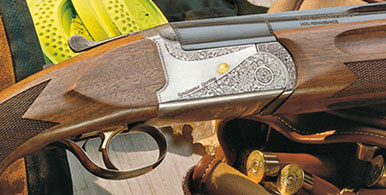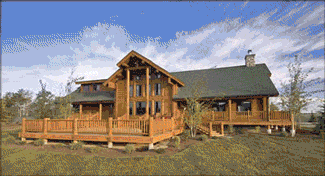Most people call it the SHOT Show. We think of it as Shotgun Candyland.
The Shooting, Hunting, Outdoor Trade Show and Conference (SHOT Show) is the largest and most comprehensive trade show for all professionals involved with the shooting sports and hunting industries. You’ll find plenty of so-called black guns for the tactical market, state-of-the-art bows, ammunition, a boatload of pistols and just about every conceivable gadget and gear on the planet for the hunting and shooting enthusiast as well as tools of the trade for the police and military.
The SHOT Show is also the best possible place to find shotguns for wing and clays shooting all under one roof. The giants of the industry such as Beretta, Browning, Winchester and Remington set aside sections in their massive exhibits for over/unders, semi-autos and side by sides.
They are accompanied by smaller companies with devoted followings such as Blaser, Fausti, Zoli, Ithaca, Caesar Guerini, Connecticut Shotgun, Benelli, Franchi, Stoeger and others.
The SHOT Show kicks off every year with Media Day. This gives the firearms press the opportunity to shoot just about every type of gun at a range. We flew in a day before the show actually started to participate in Media Day, giving us the opportunity to evaluate some new shotguns and perennial favorites. In a moment, we’ll share our impressions with you of a day on the range with these shotguns.

The SHOT Show Media Day at Desert Sportsman’s Club.
This year’s SHOT Show returned to Las Vegas from Orlando, where it was held in 2009. The SHOT Show packed the Sands Expo & Convention Center from January 19th through the 22nd.
The shows’ sponsor and owner, the National Shooting Sports Foundation, said that overall attendance reached 58,444, approaching the all-time record of the 2008 Las Vegas Show and approximately 11,000 more than last year’s show in Orlando. The 1,804 media professionals in attendance also set a new high. Exhibiting companies numbered 1,633 across some 700,000 net square feet in the convention center’s halls and the Venetian Hotel’s meeting rooms.
Whether you were on the show floor, the press room or the Media Day shooting ranges, you could hear languages spoken from Europe and Asia. At the Desert Sportsman’s Club, a group of reporters in front of me started speaking in German before switching to French when a fellow writer joined them.
The Desert Sportsman’s Club in Las Vegas hosted the 2010 New Product Event. Among the gun makers participating, we focused on shotguns provided by Browning and Winchester. About eight stands were lined up with some seven trap machines in what turned out to be a shooting free-for-all.

Winchester’s Super X3 Flanigan Exhibition/Sporting.
Winchester’s Super X3 Flanigan Exhibition/Sporting semi-auto just begged to be shot. With its candy-apple red receiver and matching forend cap contrasted against the black Dura-Touch Armor Coating, the 12 gauge simply dazzled.
Exhibition shooter Patrick Flanigan has set some speed records with a modified X3 so expectations ran high for performance. The shotgun proved to be fast, but for some inexplicable reason Winchester literally cut corners on the trigger blade. The sharp, perpendicular edges hurt your trigger finger and made the gun unpleasant to shoot. It was a far cry from the Blaser F3 28 gauge we’re currently testing, which has perfect ergonomics.
At $1,479, the X3 Flanigan Exhibition is about one-quarter the price of the Blaser F3. Still, there’s no excuse to fit a shotgun with a trigger that cuts into your finger.
We also shot Winchester’s Super X Pump Black Shadow. The action on this one was very smooth, but once again the trigger edges were angular. In addition to the trigger being painful, it was stiff and heavy – far more so than the prototype Ithaca Model 37 Waterfowl Model we had shot just a few days before on a sea-duck hunt (we’ll give you the exclusive story on that shotgun shortly).
After the two Winchester shotguns we moved on to the Brownings.

The Browning Maxus in Mossy Oak.
We tried the Browning Maxus semi-auto. Introduced last year as the world’s most reliable shotgun, the two 12-gauge versions we shot both jammed on the second shot. One of them featured the Mossy Oak finish, while the other was black. We certainly would have expected more.
Next, we shot the Browning 12-gauge 625 Citori over/under. It delivered on Browning’s reputation for quality and value. The shotgun had low recoil and a good finish. The 625 felt solid, the way Brownings are supposed to, and the gun shot well.
We picked up a .410 version of the 625. It proved to be a stunning clays crusher. Weighing slightly over 7 pounds, it delivered the handling of a bigger bore shotgun with the sheer exhilaration you can only get from a .410.

Browning’s Cynergy Classic.
Our favorite shotgun at the Desert Sportsman’s Club, however, turned out to be a 28-gauge Browning Cynergy Classic. From an aesthetics perspective, we always did like the angled lines of the Cynergy receiver where it meets the stock. Plus the Cynergy receiver has a much lower profile than the Citori. Overall, it’s a more elegant, modern looking shotgun. This 28-gauge was extremely accurate – allowing us to break the targets and many of the pieces. With a suggested retail price of $3,509, you would be hard-pressed to find a better 28 gauge for the money.
Next stop was the Boulder City Rifle and Pistol Range for Bass Pro Shops’ Media Day. Nearly every type of gun was available to the press, but we made a bee line to the shooting ranges of Blaser, Ithaca and Beretta.
Just for kicks, Blaser gave demonstrations of a muzzle loader, which broke targets with authority.
Beretta let us shoot a 12-gauge SV-10 Prevail. This handsome over/under benefits from state-of-the-art innovation that touches everything from the extractors to the hinges to the Kick Off anti-recoil on the butt of the stock. Once we located the point of impact and relaxed into the SV-10 Prevail, the gun proved nimble and easy to shoot, but we were disappointed in that it was difficult to crack open. These guns retail for about $3,000 and we can only assume opening the gun becomes easier over time. Otherwise, it would be a real challenge to buy a more advanced over/under at that price.

Beretta’s Revolutionary A400 Xplor Unico Semi Auto.
Also available to shoot was Beretta’s latest semi-auto, the A400 Xplor Unico, 12 gauge with the Kick Off recoil-reduction system. Officially unveiled at the SHOT Show, this gun is distinguished by the Unico chamber, which reliably accepts shells ranging in length from 2 ¾ to 3 ½ inches. The rotating bolt with reinforced lugs is flexible enough to manage the different shells while at the same time reduces time between cleanings and improving cycling time by some 30 percent. Weighing in at a scant 6½ pounds, it’s among the lightest semi-auto on the markets.
We found that we had to float the targets over the front bead to break the outgoers thrown from the single trap machine. The Kick Off worked as advertised, especially given the shotgun’s bantam weight. The A400 Xplor Unico shouldered fast and handled well. Priced at $1,725, it’s about $500 less than Beretta’s preceding flagship semi-auto, the 391 Technys Gold Sporting.
We wrapped up our Media Day shooting with the extraordinary Ithaca 12-gauge over/under Phoenix. The last time we shot it, the gun was in the prototype stage and we declared it the softest shooting 12-gauge over/under on the planet. Now several months later, the Phoenix was even tighter. The latest iteration of the gun shot so straight I’m convinced that even a blind folded shooter could crush targets with it. The Phoenix is in the final stages of refinement and we could see the first models come out of the factory this summer. If you’re interested, get your deposit in early because the Phoenix is already back-ordered.
Shotgun manufacturers took the opportunity to introduce several new models at the SHOT Show.

The Franchi Renaissance Sport.
Franchi brought out a Renaissance Sport over/under in a 20-gauge. The coin-finished receiver includes ornate scroll work while the oil-finished stock is made of A Grade walnut. The suggested retail price is $2,349.
Winchester introduced the Walnut SX3 20 gauge at a starting price of $1,199. The All-Purpose Field model in 12 gauge is now available with a new Mossy Oak Break-Up Infinity Camo finish for $1,469.
CZ USA, the American arm of the Czech gun maker, brought out a new ultralight 12-gauge over/under called the Upland Ultralight. Its light alloy receiver brings down the weight to 6 pounds – 2 pounds lighter than the steel-frame versions. The new shotgun starts at $749.
Weatherby expanded its SA-08 line with two new models: the Deluxe and Waterfowler. The Deluxe features a high-gloss walnut stock and blued metalwork. It’s available in both 12- and 20-gauges models for $739. The Waterfowler has a camo synthetic stock and is only available in 12 gauge. It sells for $699.
We’re already looking forward to next year’s SHOT Show, to be held at the same venue on January 18-21. Stay tuned.
Irwin Greenstein is the Publisher of Shotgun Life. You can contact him at contact@shotgunlife.com.
Useful Resources
http://www.blaser-usa.com
http://www.ithacagun.com
http://www.faustiusa.com
http://www.sv10prevail.com
https://www.berettausa.com
http://www.cz-usa.com
http://www.franchiusa.com
http://weatherby.com
http://www.winchesterguns.com
{loadposition signup}



















